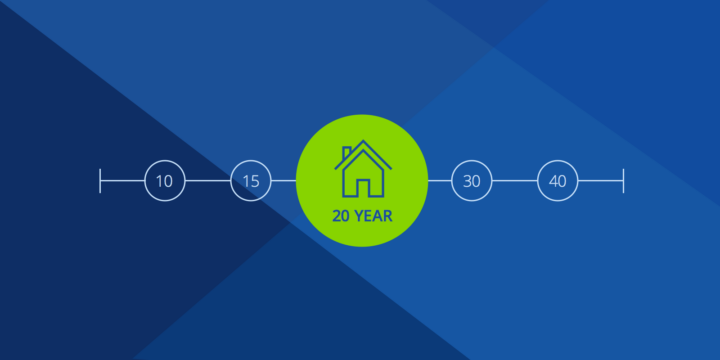How to Improve Your Credit Score


Written by Shawnna Stiver on October 2, 2025
Edited by Alycia Lucio
There are a lot of reasons why you might be interested in improving your credit score. For instance, maybe you’re preparing to buy a home. A higher credit score can improve your chances of getting a lower interest rate on a mortgage by showing lenders you’re a low risk borrower. According to Experian, most consumers have credit scores that fall between 600 and 750. Good credit is considered anything 670 or above.
The main purpose of a credit score is to predict your likelihood to repay a debt, based on how successfully you’ve repaid debt in the past. The three main credit bureaus (Equifax, Experian and TransUnion) that collect information about your credit history inform your overall credit score. These bureaus take into account your payment history, credit usage, length of credit history, the various types of accounts you have, and how recently you’ve opened new lines of credit.
By adopting healthy credit habits as soon as you can, you may begin to see changes to your score in as little as a few months. In the following guide we’ll share some common tips and tricks to earn a higher credit score over time. If you’re just getting started on your credit journey, check out these helpful tips to start building credit.
Step 1: Monitor your credit score
Once a year, you can get free credit reports from Equifax, Experian and TransUnion via AnnualCreditReport.com. Read through them line by line and check for errors like late payments or penalties. It’s also helpful to compare across the three reports and make sure they all have the same information.
You can also sign up for credit monitoring with your bank or a selection of popular apps — some are even free. These types of monitoring don’t affect your credit and will notify you about progress, alerts or potential fraud.
Step 2: Dispute and resolve errors
Whenever you find an error, contact the credit bureaus in order to dispute and resolve them. You can also hire a credit repair service to act on your behalf. Exactly how you dispute something on your credit report depends on which credit bureau you’re contacting. Generally, you can file a dispute online or in writing, by mail. Errors to watch out for could be anything from incorrectly reported accounts to credit limit errors.
Step 3: Pay delinquencies off as soon as possible
Start by paying off any delinquent bills, even if they’re already in collections. It won’t eliminate your late payment history, but it will resolve the debt and stop you from continuing to get late payment flags. Then, pay off any large credit card balances as your budget allows.
Don’t rush to pay off installment loans, though. These monthly loans demonstrate your credit history, credit mix and consistent payments. And, don’t close accounts when they’re paid off — more on that below.
Step 4: Sign up for scheduled bill payments
Since on-time payments are responsible for up to 35% of your credit score, it’s important to never make a late payment. Take advantage of auto-pay, scheduled bill pay tools from your bank or lender and calendar reminders to ensure you always pay on time.
You can report your on-time rent payments to credit bureaus for free through Zillow. All you have to do is enroll in online rent reporting to start building your credit.
Step 5: Reduce your use of available credit
Since 30% of your score is calculated based on your credit utilization ratio — meaning how much of your available credit you’re using at a given time — reducing your credit card balance is an easy way to boost your score. In fact, ideally you should be paying off your balance in full every month.
Try to keep your total credit utilization ratio below 30% to avoid hurting your credit score. To improve your score, keep it under 7%. Here’s an example: If the combined credit limit of all of your credit cards is $5,000, you should have a balance of less than $1,500 at all times. To boost your score, you’ll want a balance of less than $350.
If you have multiple credit cards, as many people do, credit monitoring tools can keep track of your utilization ratio for you.
Another way to improve your ratio is by boosting your credit limit. Ask your credit card company for an increase online or by phone, but be sure your credit score won’t be affected.
Step 6: Don’t close any accounts
As you pay off debts, it’s tempting to close out unused accounts. But since your credit history is still visible in your credit report — and makes for up to 15% of your score — don’t close any accounts. Closing accounts can shorten your overall credit history (if it’s an account you’ve had for a long time) and it can increase your credit utilization ratio.
Step 7: Avoid hard credit inquiries
If you’re improving your credit in hopes of purchasing a home soon, don’t open any new credit accounts. Hard credit checks — like those that are done when you attempt to open a new credit card, line of credit or loan — can negatively affect your credit score for six to 24 months.
Soft credit pulls are less of a concern, as they don’t impact your credit score. Some examples of soft credit inquiries are when you check your own credit report, when companies send you promotional credit offers or when you sign up for credit monitoring services. Zillow Home Loans uses soft credit pulls for all mortgage pre-qualifications, so you can rest easy knowing your credit is protected when checking your home loan eligibility.
As you’re shopping for mortgages, you should also keep your credit score in mind. Don’t take too long to shop around for interest rates. Lenders must pull your credit report every time you apply for credit. If you’re searching for a lower interest rate, there is generally a grace period of 45 days before your score is affected. All credit inquiries made within the 45-day window will be treated as a single hard inquiry.
Step 8: Consider opening a single, new account
While this goes against the advice above of avoiding the hard credit inquiries that come with opening accounts, in certain circumstances it can make sense to open one new account.
For example, if you’re concerned about your credit utilization ratio and can’t get your credit limit increased on your existing cards, you could open a new account to increase your available credit. Credit utilization is responsible for 30% of your score, yet new accounts are only 10%.
It may also be advantageous to open a new credit card with an attractive balance transfer offer. That would allow you to consolidate your debt onto a single card, effectively “paying off” other cards’ balances. If the card you open has a 0% interest rate for a promotional period, it can also help you avoid interest charges while you pay off debt. Just be sure to read the fine print — balance transfers can carry fees of 3-5%.
How much home can you afford?
At Zillow Home Loans, we can pre-qualify you in as little as 5 minutes, with no impact to your credit score.
Zillow Home Loans, NMLS # 10287. Equal Housing Lender
Get pre-qualifiedHow much home can you afford?
See what's in reach with low down payment options, no hidden fees and step-by-step guidance from us at
Zillow Home Loans.
Zillow Home Loans, NMLS # 10287. Equal Housing Lender
Calculate your BuyAbility℠
Related Articles
Get a mortgage with Zillow Home Loans
Go from dreaming to owning with low down payment options, competitive rates and no hidden fees. A dedicated loan officer will guide you until you have your keys in hand.

Zillow Home Loans, NMLS #10287. Equal Housing Lender.



